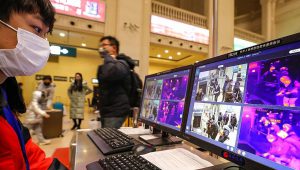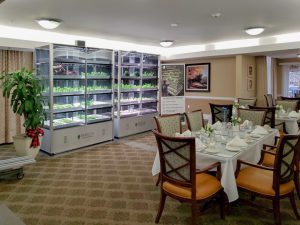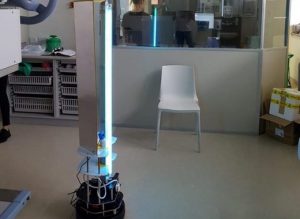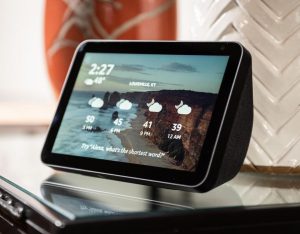Here at Meyer, the rapid spread of COVID-19 has caused us to reevaluate how we approach senior living design, and what it might mean to design for a world that will never be quite the same, especially in senior living communities across the country. The coronavirus pandemic has unleashed fundamental change throughout the world as everyone comes to terms with this new, unprecedented reality. As design professionals, Meyer’s Senior Living Studio has researched and explored how design will change and affect senior living communities in the immediate future and in the long term. Readiness Design is awareness, applications and tools for senior living developers, operators and owners to consider in order to combat the spread of COVID-19 or other potential outbreaks while maintaining a safer and healthier community.
Technology
Senior living providers are relying on technology now, more than ever. Not only as a tool to combat social isolation by remotely connecting residents with family members and medical workers, but technology that can be designed and installed directly into the building to help mitigate and even warn of a potential outbreak. As designers, we need to create ways for providers to support innovation and minimize future disruptions. We must seek solutions to safely maximize interaction during an outbreak and implement certain technologies that can bring stability into a time of general uncertainty. Some technologies for senior living communities to consider include:

- Advanced security measures such as temperature screening and the use of Infrared Fever Screening Systems (IFss) to scan visitors, staff and even residents as they enter and exit a building.
- Touchless and voice-command technology for doorways and entry, lighting controls, temperature controls, audio/visual controls, elevators and dining service.
- Self-cleaning restrooms. Self-cleaning toilets include automatic mechanisms that clean and sanitize the toilet bowl, taking care of discoloration and waste buildup inside. Take it a step further with touchless fixtures, auto-drying floors, occupancy sensors and a handicap safety system.
- Produce your own natural cleaning solutions on site with electrolyzed water. Electrolyzed water is the result of a process called electrolysis: salt is electrically separated into its two main ions, sodium and chloride. Those two ions are then mixed into separate streams of fresh water, producing two solutions: Hypochlorous Acid (PureSan) and Sodium Hydroxide (PureClean). Viking Pure generators produce two kinds of natural cleaning agents: a surface cleaner called PureClean and a sanitizer called PureSan. PureClean is a highly powerful all-natural, non-toxic alkaline water solution. PureSan is hypochlorous acid, the same thing your body produces in response to an infection. See the testimonial below from one of our clients, Brandywine Senior Living.
- When it comes to technology in food service, micro-farms can be placed in dining areas or kitchens to grow herbs, vegetables and produce to help with supply, quality and freshness. Not only can you reduce your carbon footprint, but goods harvested from micro-farms are higher in nutrients since it doesn’t have to travel across the country before consumption. https://www.babylonmicrofarms.com/
- Mobile devices such as an iPad or Amazon Echo Show are easy to use, cost effective technology tools for communities to have available in resident rooms. At the push of a button, residents can interact with family and friends without having to leave their unit.
- Technology for activities is also available, but sometimes difficult for residents to engage with. Most activities are being conducted on a one-on-one basis inside resident units. Try to keep residents active and nourished with apps like Vitality Society, Curefit and Freeletics
- Far-UVC light: A 2018 study concluded that the use of far-UVC light in indoor public locations is a promising, safe and inexpensive tool to reduce the spread of airborne-mediated microbial diseases.* While this is still an evolving tool, heathcare facilities around the world have adopted machines that sterilize rooms and equipment with powerful blasts of light that are harmful to viruses without damaging human skin. Some companies such as Akara Robotics and Healthe Lighting are developing potentially revolutionary sanitizing products for the built environment.
- Considerations include a UV-C sanitizing entry gate https://healthelighting.com/products/cleanse-portal. Simply step into the portal and make a slow 360 degree turn for a 20 second dosage.
- UV-C robots are also on the prowl, helping healthcare and now senior living and nursing communities as a mobile disinfectant system. Akara Robotics have design Violet The Robot which is portable and compact enough to be able to operate in tight, crowded spaces that are otherwise hard to clean: units, bathrooms, waiting and common areas. It has a protective shield around the back of the light, and motion-detecting sensors so that people don’t have to vacate the area while it’s at work.



![]()